| Years in Russia: | 1821 1822 1823 1824 1825 1826 1827 |
| Centuries: | 18th century · 19th century · 20th century |
| Decades: | 1790s 1800s 1810s 1820s 1830s 1840s 1850s |
| Years: | 1821 1822 1823 1824 1825 1826 1827 |

Events from the year 1824 in Russia
| Years in Russia: | 1821 1822 1823 1824 1825 1826 1827 |
| Centuries: | 18th century · 19th century · 20th century |
| Decades: | 1790s 1800s 1810s 1820s 1830s 1840s 1850s |
| Years: | 1821 1822 1823 1824 1825 1826 1827 |

Events from the year 1824 in Russia
| | This section needs expansion. You can help by adding to it. (October 2015) |
| | This section needs expansion. You can help by adding to it. (October 2015) |
| | This section needs expansion. You can help by adding to it. (October 2015) |

The Neva is a river in northwestern Russia flowing from Lake Ladoga through the western part of Leningrad Oblast to the Neva Bay of the Gulf of Finland. Despite its modest length of 74 kilometres (46 mi), it is the fourth-largest river in Europe in terms of average discharge.
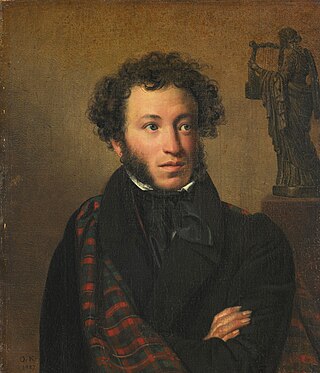
Alexander Sergeyevich Pushkin was a Russian poet, playwright, and novelist of the Romantic era. He is considered by many to be the greatest Russian poet, as well as the founder of modern Russian literature.

Pushkin is a municipal town in Pushkinsky District of the federal city of St. Petersburg, Russia, located 24 kilometers (15 mi) south from the center of St. Petersburg proper, and its railway station, Tsarskoye Selo, is directly connected by railway to the Vitebsky Rail Terminal of the city. Population: 92,889 (2010 Census).
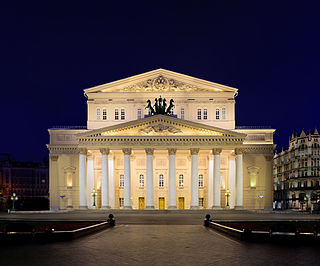
The Bolshoi Theatre is a historic opera house in Moscow, Russia, originally designed by architect Joseph Bové. Before the October Revolution it was a part of the Imperial Theatres of the Russian Empire along with Maly Theatre in Moscow and a few theatres in Saint Petersburg.

Kronstadt is a Russian port city in Kronshtadtsky District of the federal city of Saint Petersburg, located on Kotlin Island, 30 km (19 mi) west of Saint Petersburg, near the head of the Gulf of Finland. It is linked to the former Russian capital by a combination levee-causeway-seagate, the St Petersburg Dam, part of the city's flood defences, which also acts as road access to Kotlin island from the mainland.
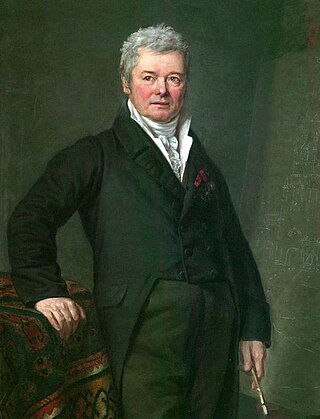
Fyodor Yakovlevich Alekseyev was a Russian painter. His contemporaries often called him the Russian Canaletto, in recognition of his masterful vedute.

Alexander Andreyevich Ivanov was a Russian painter who adhered to the waning tradition of Neoclassicism but found little sympathy with his contemporaries. He was born and died in St. Petersburg. He has been called the master of one work, for it took 20 years to complete his magnum opus The Appearance of Christ Before the People.

Alexander Dmitrievich Petrov was a Russian chess player, chess composer, and chess writer.

The Saint Petersburg Flood Prevention Facility Complex, unofficially the Saint Petersburg Dam, is a 25 km (16 mi) long complex of dams for flood control near Saint Petersburg, Russia. The dam extends from Lomonosov northward to Kotlin Island, then turns east toward Cape Lisiy Nos near Sestroretsk.

Agustín de Betancourt y Molina was a prominent Spanish engineer, who worked in Spain, France and Russia. His work ranged from steam engines and balloons to structural engineering and urban planning. As an educator, Betancourt founded and managed the Spanish Corps of Civil Engineers and the Saint Petersburg Institute of Communications Engineers. As an urban planner and construction manager, Betancourt supervised planning and construction in Saint Petersburg, Kronstadt, Nizhny Novgorod and other Russian cities.
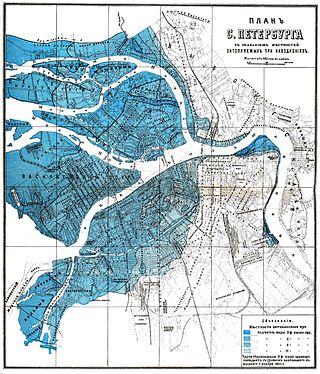
Floods in Saint Petersburg refer to a rise of water on the territory of St. Petersburg, a major city in Russia and its former capital. They are usually caused by the overflow of the delta of Neva River and surging water in the eastern part of Neva Bay but sometimes caused by melting snow. Floods are registered when the water rises above 160 cm with respect to a gauge at the Saint Petersburg Mining Institute. More than 300 floods have occurred since the city was founded in 1703.
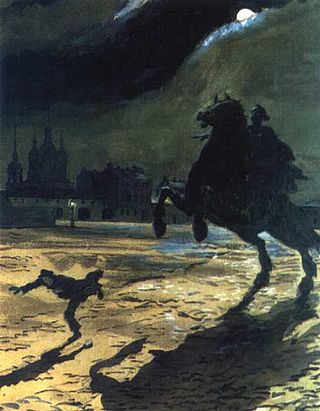
The Bronze Horseman: A Petersburg Tale is a narrative poem written by Alexander Pushkin in 1833 about the equestrian statue of Peter the Great in Saint Petersburg and the great flood of 1824. While the poem was written in 1833, it was not published, in its entirety, until after his death as his work was under censorship due to the political nature of his other writings. Widely considered to be Pushkin's most successful narrative poem, The Bronze Horseman has had a lasting impact on Russian literature. The Pushkin critic A. D. P. Briggs praises the poem "as the best in the Russian language, and even the best poem written anywhere in the nineteenth century". It is considered one of the most influential works in Russian literature, and is one of the reasons Pushkin is often called the "founder of modern Russian literature".

The main Saint Petersburg Botanical Garden, officially known as the Russian Academy of Sciences Vladimir Komarov Botanical Institute's Botanical Garden of Peter the Great, is the oldest botanical garden in Russia and the best-known one out of botanical gardens of Saint Petersburg, the other two belonging respectively to Saint Petersburg State University and Saint Petersburg Forestry Technical University. It consists of outdoor and indoor collections situated on Aptekarsky Island in Saint Petersburg and belongs to the Komarov Botanical Institute of the Russian Academy of Sciences. It is 18.9 ha in area, and is bordered by Aptekarsky Prospekt, Prof. Popov Street, as well as the embankments of the Karpovka and Bolshaya Neva rivers.

Princess Charlotte of Württemberg, later known as Grand Duchess Elena Pavlovna, was the wife of Grand Duke Michael Pavlovich of Russia, the youngest son of Emperor Paul I of Russia and Duchess Sophie Dorothea of Württemberg.

Maly Theatre is a theatre in Moscow.
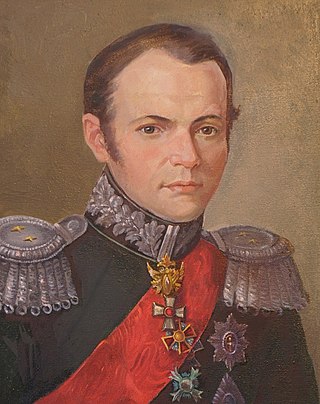
Pierre-Dominique Bazaine (1786–1838) was a French scientist and engineer.
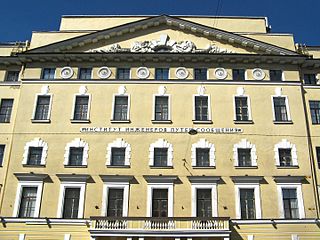
Emperor Alexander I St. Petersburg State Transport University (PGUPS) is a higher education institution specializing in railway transport.

Saint Petersburg, formerly known as Petrograd and later Leningrad, is the second-largest city in Russia after Moscow. It is situated on the River Neva, at the head of the Gulf of Finland on the Baltic Sea. The city had a population of roughly 5.6 million residents as of 2021, with more than 6.4 million people living in the metropolitan area. Saint Petersburg is the fourth-most populous city in Europe, the most populous city on the Baltic Sea, and the world's northernmost city of more than 1 million residents. As Russia's Imperial capital, and a historically strategic port, it is governed as a federal city.

Alexander I, nicknamed "the Blessed", was Emperor of Russia from 1801, the first king of Congress Poland from 1815, and the grand duke of Finland from 1809 to his death in 1825. He was the eldest son of Emperor Paul I and Sophie Dorothea of Württemberg.

Events from the year 1825 in Russia
![]() Media related to 1824 in Russia at Wikimedia Commons
Media related to 1824 in Russia at Wikimedia Commons